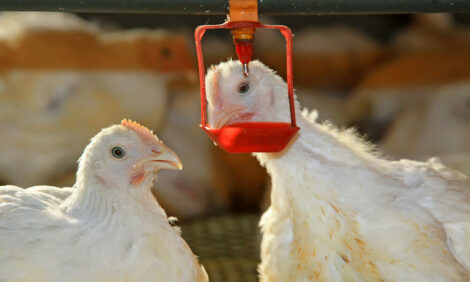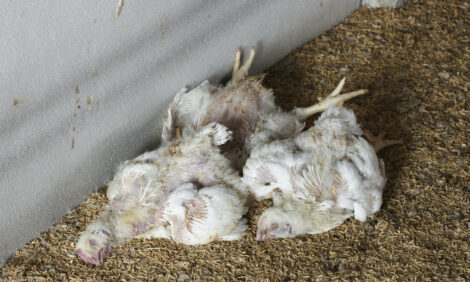



Tackling Most Common Food Poisoning Bacteria
UK - Twelve projects, bringing together researchers from across disciplines, will study Campylobacter in the food chain, from field to plate.Together, the projects cover a comprehensive range of questions about Campylobacter, which is the leading cause of food poisoning in the UK.
The projects, funded through a joint call for proposals managed by BBSRC, the Food Standards Agency and Defra, will use a total of over £4M funding to find out more about the organism that causes over 300,000 cases of food poisoning a year in England and Wales, and how best to control it.
Science Minister David Willetts said: "Tackling the causes of food poisoning is vital for our health and will give the public greater confidence in the British poultry industry, as well as helping to guarantee future food security. These projects will ensure this important task is underpinned by leading edge, robust science, with a coordinated approach between Government agencies and the research community."
The most common source of Campylobacter infection in humans is poultry meat - either through consumption of undercooked product or through cross contamination in the kitchen environment. Whilst good hygiene and thorough cooking can effectively prevent infection, there are still a high number of cases in the UK and the cost to the economy is estimated at up to £600 million per annum.
These projects will also contribute to future food security in the UK. Having an appropriate quantity of food to eat is important, but that food must also be sustainable, safe and nutritious. Tackling food poisoning bacteria can improve food safety and also reduce wastage and losses via fewer quality control failures and increased shelf life. BBSRC, Defra and FSA are all partners in the Global Food Security programme and these projects are funded as part of a wider cross-government research and innovation strategy on Campylobacter.
The poultry industry in the UK is worth £4 billion at the retail level and employs 35,000 people. This science will serve to underpin strength in this industry in the UK and also globally where it is estimated to be worth over £85Bn. This not least because the UK hosts the world's two leading poultry breeding companies, which supply more than 80% of the global supply of breeding stocks.
There are three main areas covered by the funded projects:
- When does infection begin in poultry, what are the common points of contamination, and are there stages in the process where control measures are likely to be most effective?
- How can biocontrol of Campylobacter on farms and during processing make a difference? What are the best approaches to biocontrol?
- What is it about the biology of the bacteria, the bird, and the interaction between them that compounds the problem?
Campylobacter infection or contamination can potentially occur at any point during poultry production and food processing. The aims of this group of projects include identification of the key sources of the initial infection on farms; the common points of contamination; and 'weak spots' in the pipeline of infection where there is a high chance of eliminating bacteria from the food chain.
Some of the projects look at the potential to control Campylobacter infection on farms. By developing and/or testing new and existing biocontrol methods they hope to provide advice for new policy and practice.
Birds are able to tolerate a relatively large population of Campylobacter in their gut without ill effect, whereas humans can become ill after ingesting only a few bacteria. This raises questions as to why the birds don't become ill and what factors could reduce the burden of bacteria in their gut. This leads to another aim of these projects, which is to investigate the factors that affect colonisation of the poultry gut, retention of bacteria inside the gut, and whether diet can reduce the incidence or level of infection.
The research teams will combine many disciplines to take a holistic approach to the questions raised - microbiology, genomics, mathematics, computing, genetics, epidemiology, and more.
Professor Douglas Kell, Chief Executive, BBSRC said: "Campylobacter raises some unique questions about food security, human health, and animal welfare. We need good science to underpin changes to policy and practice throughout the food chain that can address these problems whilst supporting a strong farming industry and healthy UK economy. These projects are well placed to make significant advances to this end."
Andrew Wadge, Chief Scientist at the Food Standards Agency said: "Improving public health by tackling Campylobacter is a key priority for the Food Standards Agency. The levels found on raw chicken are too high in the UK and we are working with industry to reduce them significantly. To help us we need to know more about Campylobacter. The research we are carrying out with the BBSRC and Defra will help us increase our knowledge and better protect consumers."
Peter Bradnock, Chief Executive of the British Poultry Council and chair of the Joint industry/government Campylobacter Working Group, welcomed the new round of research.
"Campylobacter is very different from other food-borne bacteria. This work is vital to better inform the controls already in place and interventions being trialled on farms and across the production chain. Poultry companies are fully engaged with the researchers and are collaborating on these projects to find more effective interventions against this most difficult organism"









